DAY 7 (Congrats!) of the 7-Day Hydration Challenge: “Thangry” Is the New “Hangry”

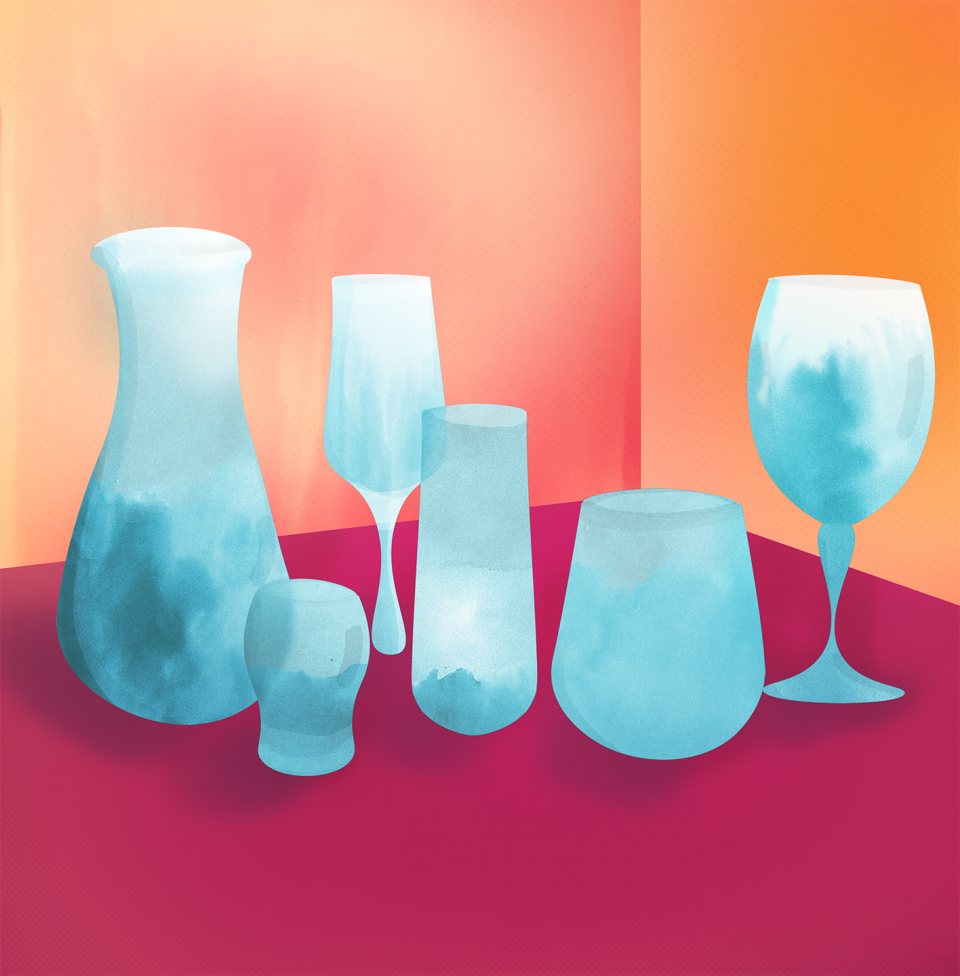
There are tons of theories about what proper hydration can and can’t do for the body. People have claimed it can make skin look plumper or more radiant, that it can prevent cancer, and even that it can protect against COVID-19. While the scientific evidence for all of these effects remains mixed, one thing is clear: The human body does not like to be low on water.
“If we’re not hydrated, then our body is in a state of stress,” says Melissa Majumdar, M.S., R.D., dietitian at Emory University Hospital and a spokesperson for the Academy of Nutrition and Dietetics. “And we do know that states of stress can lead to chronic disease.” When you’re chronically dehydrated, your body will release the stress hormone cortisol, and that can impact weight, blood sugar, and even cardiac function. Coming off a landmark year of stress, one could argue there’s never been a better time to drink up.
Enter: Prevention’s 7-Day Hydration Challenge. You’ll learn how to use the science behind hydration to your benefit and pay attention to your own body as it signals what it needs. Check back here every morning at 9:30 a.m. for a new task, and a mere week from now, you’ll have everything you need to become your best, most hydrated self.
Your first goal is to hydrate by drinking and eating mindfully. An egg is a great place to start, because it’s cheap, healthy, and it starts out as a liquid before you cook it.
But wait, let’s back up for a sec. Where did our fascination with how much water to drink per day originate—and why is there so much confusion about it?
While not a myth exactly, the recommendation to drink eight glasses of water a day isn’t supported by any rigorous science. Researchers believe it stems from a 75-year-old report that has been repeated so often it has simply become canon. Back in 1945, the U.S. National Academy of Sciences Food and Nutrition Board recommended consuming 1 milliliter of fluid for every calorie eaten. If you consume a diet of about 2,000 calories, that comes out to 8 and a half cups of water a day.
Beyond that, experts will say it depends—on how active you are, how hot it is where you live, and even how “salty” you are (more on that later).
The good news is, that same Food and Nutrition Board bulletin said that a substantial portion of dietary water can and should come from foods and drinks. “Fruits and vegetables, yogurt, even foods that are made with fluid like hot cereals, rice, and pasta, count because they’re absorbing fluid as they cook,” says Majumdar.
The most recent government recommendations on hydration, a 2004 report backed by eleven researchers from the Institute of Medicine of the National Academies, say that well-hydrated men tend to consume about 3.7 liters of fluid a day, and well-hydrated women consume about 2.7 liters (or 11.4 cups) . But you don’t need that amount in pure water.
We know it would be satisfying if, to kick-off this challenge, we gave you an exact amount of water to drink per day. But that would be doing you a disservice. Rather, today’s challenge is to disassociate guilt from daily glasses of pure water consumed and make sure that you get fluids from lots of sources—fruits and vegetables, coffee, tea, juice, and even soda—in addition to water.
If you want more guidance throughout the day, the experts who wrote the aforementioned report agree: Check in with yourself. Are you thirsty? If yes, you’re probably a little dehydrated, so drink up. If the idea of downing water right now doesn’t feel right, set a glass of water nearby and you’ll likely pick it up when you’re ready, without even thinking about it.
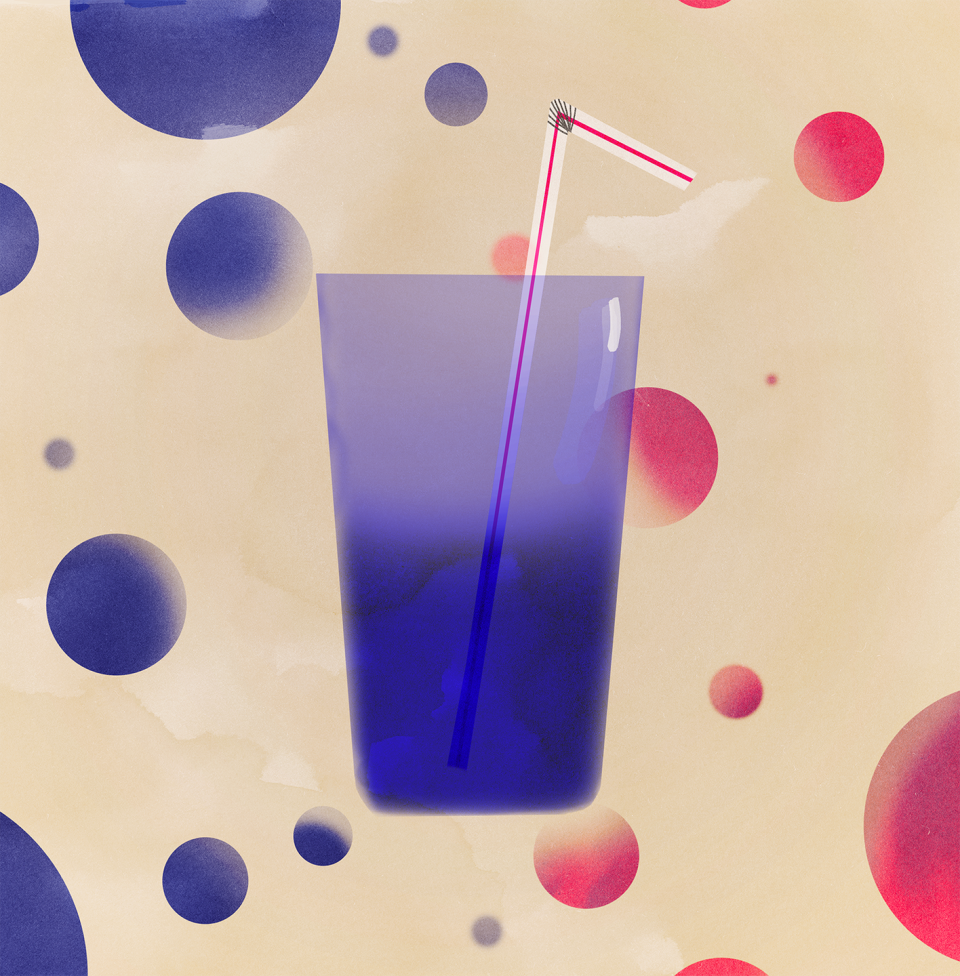
Today’s challenge is to hydrate without relying on sugary drinks. And it’s not just about the sugar itself—making good choices about what to drink is easier if you understand a concept called osmolality. It’s an interesting way to think about hydration (and bonus, is pretty fun to say).
All human cells need appropriate concentrations of water, potassium, and sodium both inside and outside to work properly. One way to measure those proportions is to determine how concentrated the fluids in your body are. A scientist can take blood serum or urine, separate out all the solids (such as salts, sugars, and minerals), and then divide the total amount of those solids by the total amount of fluid. The resulting number is a measure of osmolality.
While, yes, any non-alcoholic beverage provides hydration, how quickly the fluid gets into your cells may come down to how concentrated your drink of choice is. “The blood is around 290 or 300 osmolality, and many of the drinks that are sold to us in stores are over that. Some of them are really high, like 1,200 for cranberry juice. In order for these things to be absorbed, water has to come out of your body into the intestine to dilute it down until the gradients are right,” says Jodi Stookey, a nutrition epidemiologist at Arizona State University.
While a beverage’s osmolality doesn’t have major effects for hydration, it can affect how quickly liquids get into your system, and it can also be a good proxy measure for high calories. “I think of it as ‘this is a concentrated drink’ and ‘that is a dilute drink,’” Stookey says. “And the sugary drinks are in the group with the concentrated drinks.”
So today, while, yes, you can get some hydration from sodas and other liquids, aim to drink a greater amount of flat or carbonated water—with a squeeze of citrus juice if you’d like, for taste.

Today your goal is to observe your urine throughout the day. Because water and salt balance is vital for survival, your body has a powerful system, called the osmoregulatory system, for maintaining it. Part one of this system are specialized neurons in your brain that can tell when the water in your body decreases.
“Let’s say you have a busy day and you don’t have a chance to drink enough. Under those circumstances, the saltiness level of your blood is going to rise because you’ve lost water molecules from the blood, leaving the salt behind. And your blood volume shrinks because you’ve lost water from the blood. Those are two very powerful factors that result in increased thirst,” says Bob Murray, Ph.D., former director of the Gatorade Sports Science Institute and founder of Sports Science Insights, which helped develop Dogfish Head’s SeaQuench ale. Neurons that can detect low blood volume and high blood saltiness release water-conserving hormones when they sense you’re low on H20. They also make you feel thirsty.
Part two of the body’s hydration system are the kidneys, which respond to those hormones released by the brain and also use their own sensors. The kidneys conserve or release water and salt by changing the amount and concentration of your urine. This is why doctors recommend paying attention to pee color to make sure you’re properly hydrated: The color of your urine is a reliable, personalized measure of hydration status. If your urine is yellow or darker, your body could use some water. As long as it’s straw colored or lighter, you’re doing great.
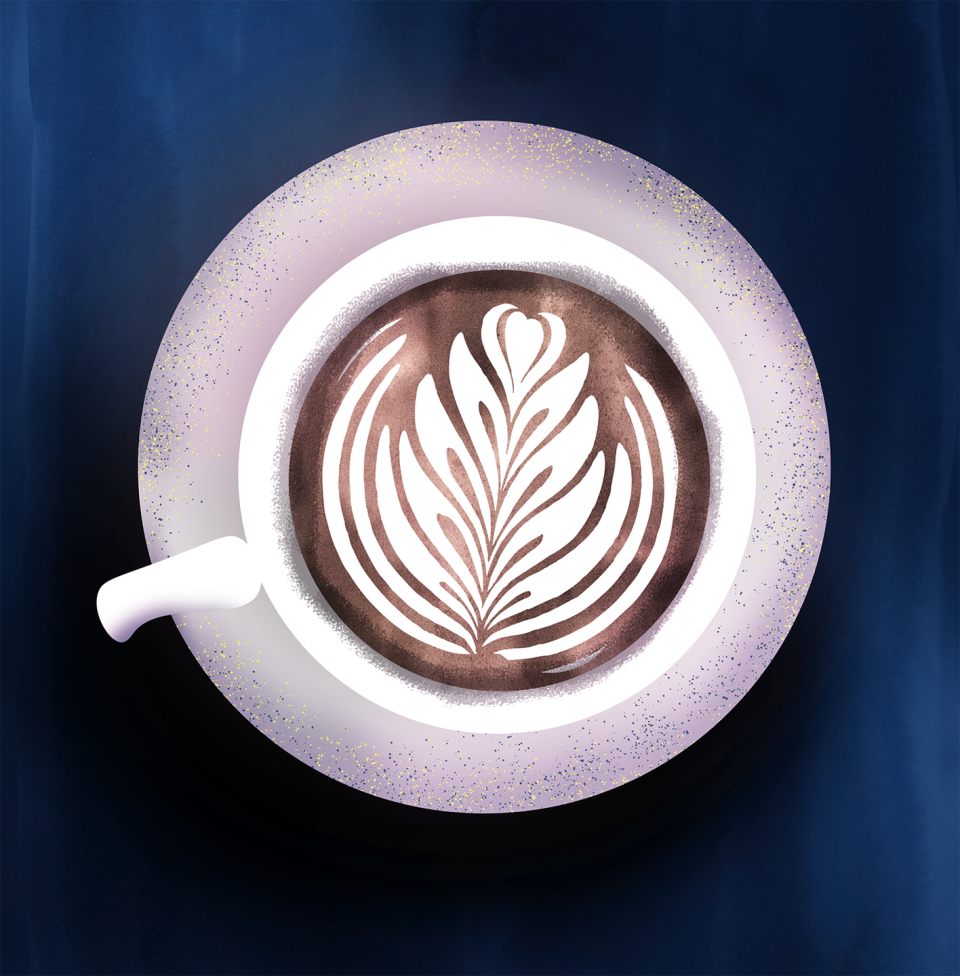
Today your goal is to choose between coffee or tea and enjoy it as part of your 360° hydration. That’s because the idea that coffee and tea are dehydrating is a myth. “We absolutely can count coffee and tea as fluid,” Majumdar says. “The only fluid we would not want to count is alcohol.”
The myth that coffee and tea dehydrate the body may date back to a 1928 study that involved injecting caffeine into rabbits—a much different method of consumption than most people use to enjoy coffee. While caffeine is a diuretic, which means it encourages the body to produce urine, as long as you’re drinking water alongside it, your body’s osmoregulatory system absorbs all the water you need before you pee. In fact, since the 1920s, several studies, including one from 2014 in which men drank either 27 ounces of coffee or the same amount of water and had their urinary and blood markers of hydration measured over three days, have shown that coffee and tea provide just as much hydration as water.
Beware, however, if you’re the kind of person to drink a cup of coffee and then bury yourself in Excel for hours: “We can override [our natural thirst mechanism] by being busy or distracted,” Majumdar says. Keeping a water bottle nearby can help—some, such as models from Hydromate, come with goal lines and motivational slogans on them. Fun beverages, such as infused and sparkling waters, both of which hydrate just as well as the plain stuff, can inspire you to drink more often too. There are even hydration reminder apps, such as Waterminder, to help your body bump its thirst message to the top of your inbox.
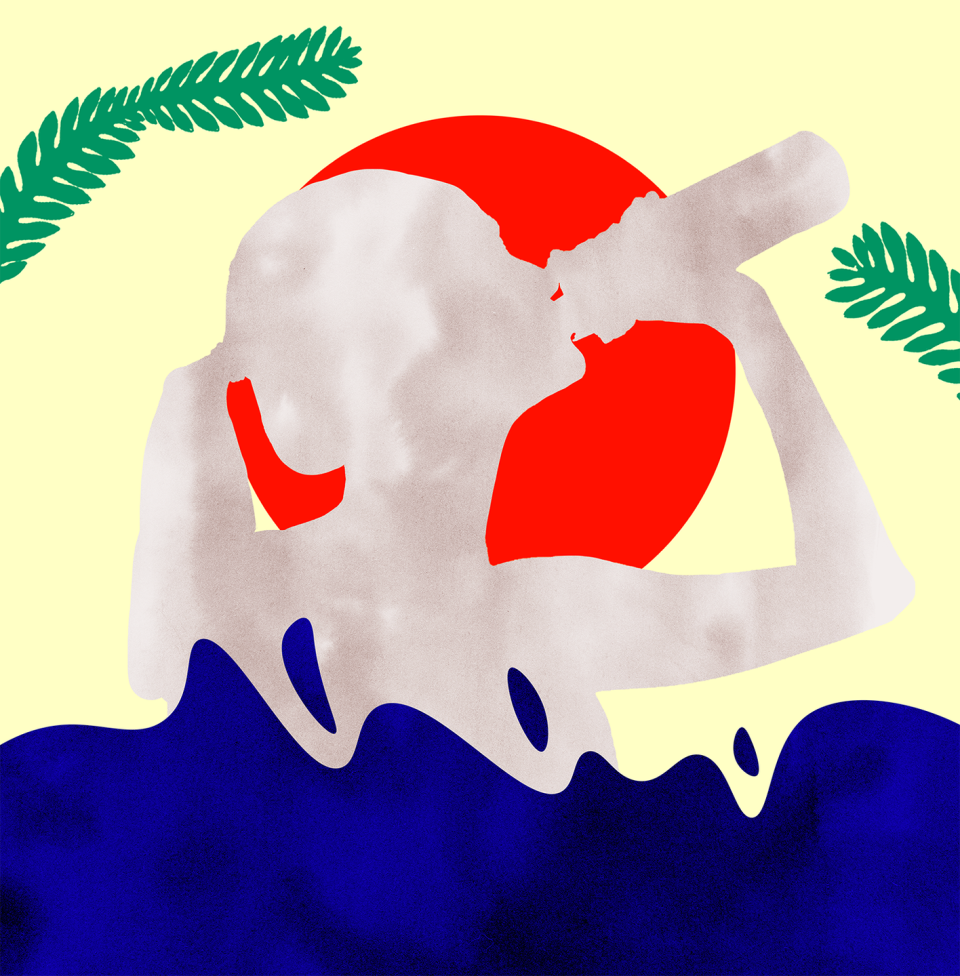
More than halfway through this challenge, today we want you to think about, and write down, how prioritizing your hydration is working (or not) for you. Do you feel more energy, less foggy? Or maybe you’ve decided the coconut La Croix just isn’t your favorite, and it’s back to pamplemousse you’ll go.
There are no right or wrong answers, because “there's no part of our body that doesn’t benefit from water,” says Brigitte Zeitlin, a registered dietician who counsels clients through her practice BZ Nutrition. “Water affects our digestive system. It affects how our brain functions. It affects how our muscles contract and relax. It keeps our joints lubricated. It helps regulate our body temperature.”
Being properly hydrated may even help you lose weight: It is very common to mistake thirst for hunger and eat calories your body doesn’t need. On top of that, studies have found additional weight loss among dieters who drank water before eating versus those who did not.
Consider checking in about your hydration as part of your self-care routine even after this challenge is over—whether it’s part of a journaling exercise or setting a calendar reminder.
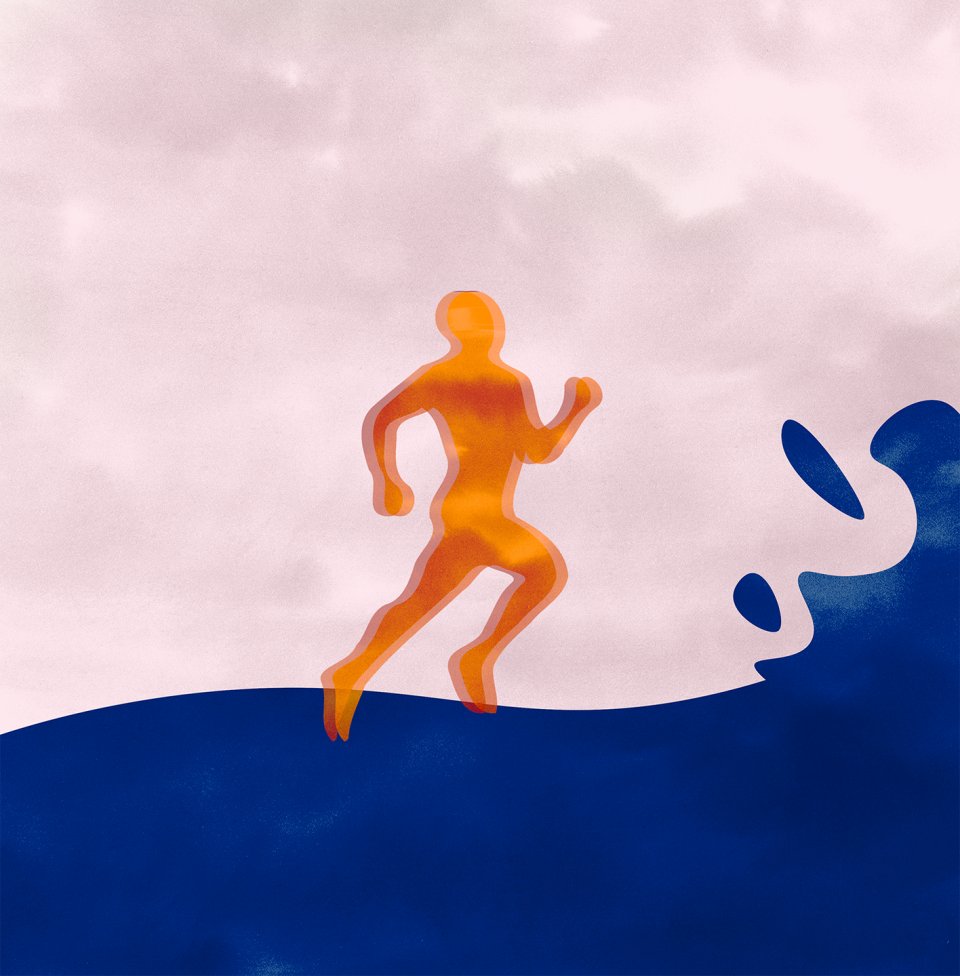
Today your goal is to put an athlete worthy event on your calendar (something feasible for you, like a 5K or half marathon), and then consider reaching for the Gatorade. Until then—unless you’re feeling sick—you don’t need sports drinks to hydrate.
Sports drink companies have made us believe that all we need to perform like all-star running backs is a neon beverage full of electrolytes. But the truth is the other way around: Athletes need sports drinks, and the rest of us, well, don’t. “If you’re not an athlete—and by athlete I mean you are training for a marathon, you are running five to six plus miles a day, you’re training for triathlons, you’re an Olympic medalist—sports drinks can be high in sugar and other additives that will really backfire on your overall health goals,” Zeitlin says.
How do you know if you’re doing enough to need replenishment? “The simplest approach is to weigh yourself before practice, then weigh yourself after practice or any type of training session,” says Murray. If you are pretty close to where you started, you’ve done a good job of hydrating. If you’ve lost considerable weight, you’re dehydrated, and should consume water and perhaps a replenishing meal, like a banana and peanut butter, or go for a sports beverage containing electrolytes. You can also look for salt rings on your clothes. “If you wear a hat during exercise or a shirt and there's white residue that’s left over, that's an indication you’re a salty sweater,” Murray says, and that’s extra incentive to choose a sports drink over water.
One more time sports drinks can make sense is when you need to get water into the body continuously, such as when you’re sick or are exercising in high heat. “The science of sports drinks is pretty much the same science that bartenders have known for centuries: Put salty snacks on the bar, and people drink more,” Murray says. The reason sports drinks work so well is that they maintain the salt-driven desire to continue drinking. “So sports drinks aren’t really thirst quenchers so much as they are thirst maintainers,” Murray says. “And that’s exactly what we want to have happen.”
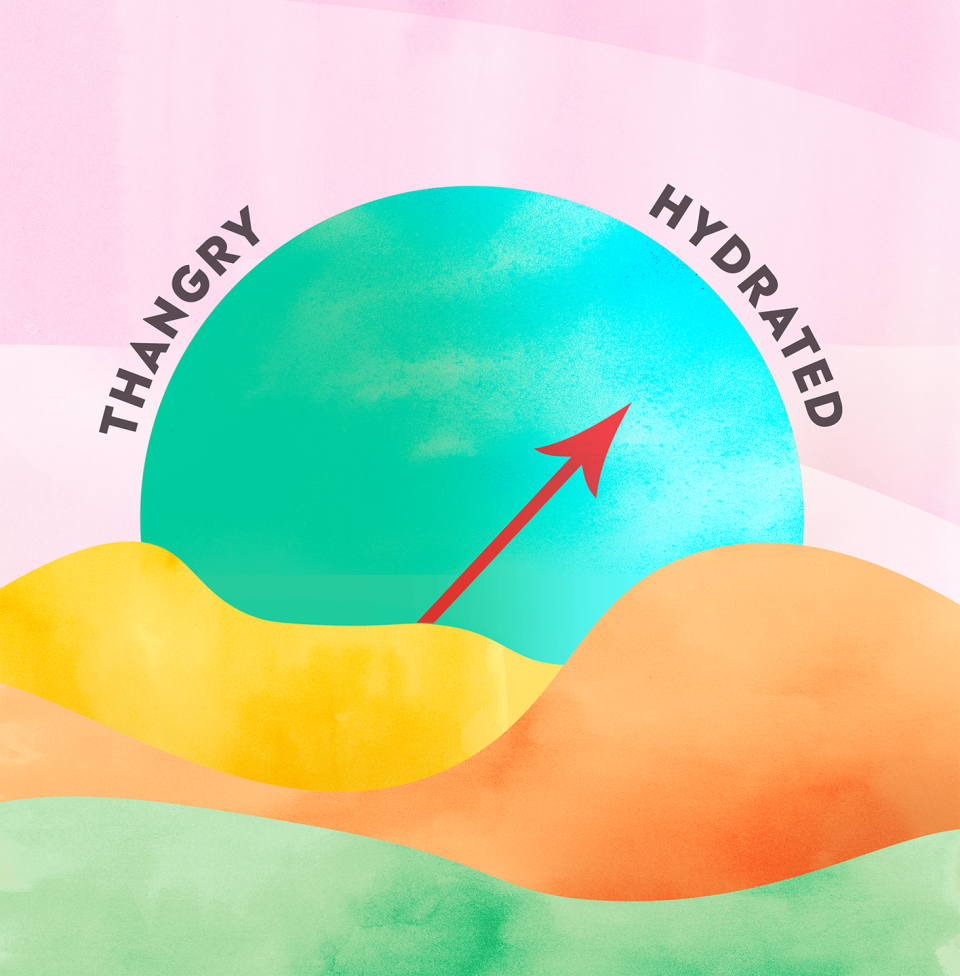
Congratulations! You’ve made it to the seventh and last day of this challenge. Today’s goal is to track your mood alongside your hydration status, the final and most nuanced step in listening to your own body’s needs.
When you’re feeling tired or irritable (or both), could you use some water? One of the ways our bodies motivate us to drink water is by making dehydration feel unpleasant. Even mild dehydration can make you feel tired or brain foggy. You may have trouble concentrating, get muscle cramps, feel lightheaded, and perform worse in sports. And you’ll probably get moody. The term “thangry” hasn’t caught on the same way the portmanteau of hungry and angry has, but that doesn’t mean thirst crankiness isn’t real. “When we get dehydrated, we get grouchy,” says Stookey, and sorry but “that’s especially true for women.”
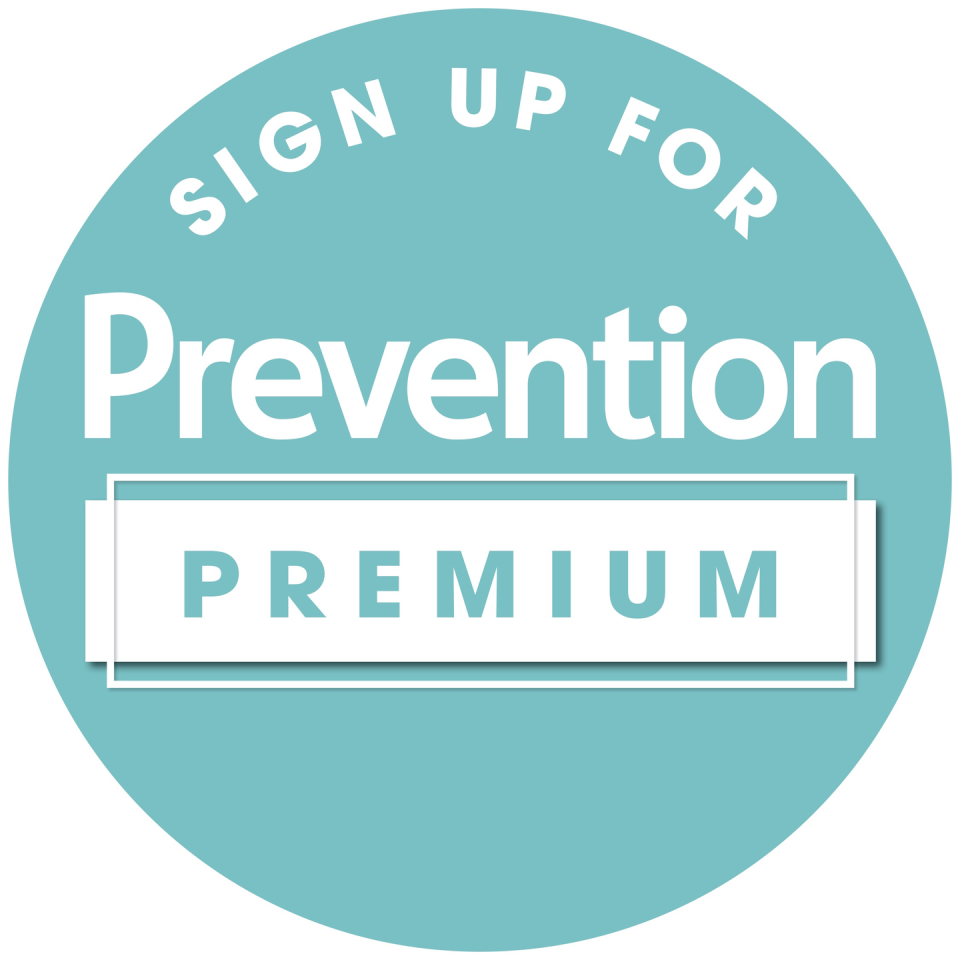
In 2015, two researchers from Swansea University in Wales published an article reviewing thirty studies on the effects of hydration on mood and cognition. Twenty-one of those studies explicitly measured people’s mood, and every single one of those found that dehydration made mood worse. This effect may be more pronounced in people with ovaries, because estrogen affects the body’s water balance and kidney function and may affect the sensitivity of thirst-causing neurons.
“More often than not, if you’re feeling a little bit irritable, if you’re feeling cravings, if you’re feeling brain fog, if you’re feeling low energy, it’s hydration,” says Zeitlin, who notes that she tries to encourage her clients to pay attention to their internal feelings rather than automatically reaching for sugar or caffeine. “I’m hoping that mindfulness is a trend for 2021,” she says. “And that carries over to being mindful of your hydration.”
Go here to join Prevention Premium (our best value, all-access plan), subscribe to the magazine, or get digital-only access.
FOLLOW PREVENTION ON INSTAGRAM
You Might Also Like

